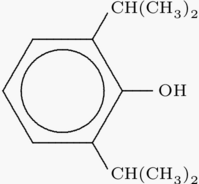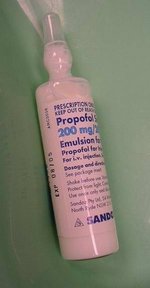Hollywood, Fla. -- When providing facial rejuvenation, consider doing multiple procedures, rather than just one. It could be beneficial to perform several complementary procedures for an overall look that is more aesthetically pleasing than a single procedure alone.
According to oral maxillofacial surgeon Joseph Niamtu, these multiple procedures can now be safely executed in the office setting, thanks to clinical advances. He presented his experiences with 20 years of in-office procedures at the annual meeting of the American Academy of Cosmetic Surgeons. In the last decade, improvements to instrumentation, anesthesia techniques, and medication "make it easier than ever to combine [facial rejuvenation] procedures and still have a safe experience with a reasonable recovery period."
Patient selection
Multiple procedures, which can be as few as three or as many as eight or so, aren't for everyone, and patient desires must be considered before venturing down this path. Someone with severe systemic disease or a person who cannot tolerate anesthesia should not have multiple procedures. Dr. Niamtu said this approach is ideal for smokers who may have difficulties with facelift flap viability, necrosis, or healing.
And not every patient is willing to endure significant post-operative swelling and lengthy recovery of two weeks or more. Patients should also understand just how dramatic their appearance will change, which can be overwhelming for some.
"Sometimes they're not ready for that big of a change, no matter what you tell them [before the procedures]," said Dr. Niamtu, who has a practice limited to cosmetic facial surgery in Richmond, Va., and is a fellow of the American Academy of Cosmetic Surgeons.
Dr. Niamtu said a huge benefit of how he approaches multiple procedures is that general anesthesia is not required. Rather, he titrates the neuroleptic agent ketamine HCl (5 mg) and alternates it with midazolam HCl (Versed, Roche) (5 mg) every 15 to 20 minutes. He adds propofol (Diprivan, Zeneca) if the patient needs a deeper anesthetic plane. This can be done in a drip regimen, also.
While ketamine has been reported to cause unpleasant dreams associated with emergence phenomenon, Dr. Niamtu said it is very safe. "I've been using ketamine daily for 20 years and have never seen that."
For airway control, he recommended the use of an oxygen cannula inserted into a rusch nasal airway device. The rusch tube, from Southern Anesthesia, is smaller than an endotrachial tube but longer than a nasal trumpet. The device keeps the tongue off the posterior pharynx, enabling a minimally invasive airway.
To prevent deep vein thrombosis and clotting, he puts inflatable anti-embolism compression stockings on the legs of his patients during surgery.
Equipment
Multiple procedures are possible today because laser technology has advanced and because endoscopic surgery enables a minimally invasive approach.
Use of a C[O.sub.2] laser for incisions, "keeps bleeding to an absolute minimum, which is important for these long procedures," said Dr. Niamtu. Healing is equal or superior to scalpel incisions, he added.
"The ability to coagulate while you incise is very important because blood loss can be a problem."
He uses a Lumenis UltraPulse Encore C[O.sub.2] laser or the Ellman radiofrequency device with microelectrode for all incisions. Another function of the CO2 laser is for simultaneous resurfacing with a facelift. Dr. Niamtu recommended lasering the facelift flaps quite conservatively with a single pass of 3.5 joules in a 3-9-6 pattern; other facial areas can be treated more aggressively.
"I've never encountered a problem with necrosis. There are reported complications, but you have to be conservative," he noted.
"Laser with a facelift really makes a huge difference in the result," he said. By treating uneven pigmentation, age spots, and wrinkling along with a facelift, "it really takes years off the face."
Shared incisions
Dr. Niamtu minimizes the number of incisions needed by doing more than one procedure through one incision. For example, he executes a mid-facelift through a browlift incision and does most of a browlift dissection through an upper-eyelid incision.
Sharing incisions lends itself to the multiple procedure approach and can decrease surgery time.
To minimize scarring, he uses a transconjunctival approach for all eyelid surgeries using a luminous laser. External lower-lid approaches can cause eyelid malposition, he said.
Doing multiple procedures is not for all surgeons, and Dr. Niamtu said the time commitment of four to seven hours can be demanding. Patients may have a more difficult extended recovery, as well. However, the results can make it all worth it.
Results can go beyond patient appearance and satisfaction, he said. "Every patient treated by a doctor is a walking advertisement for the practice, for better or for worse. The best patients are the ones who have a high level of rejuvenation," he said. "If you repaint one car door, it looks fine, but compared to the whole car, it's not an ideal situation."
Dr. Niamtu specializes in oral maxillofacial cosmetic facial surgery. He is board certified by the American Board of Oral Maxillofacial surgery; a fellow of the American Academy of Cosmetic Surgery; is on the board of directors of Cosmetic Surgery Foundation; and in practice in Richmond, Va.
COPYRIGHT 2004 Advanstar Communications, Inc.
COPYRIGHT 2004 Gale Group




